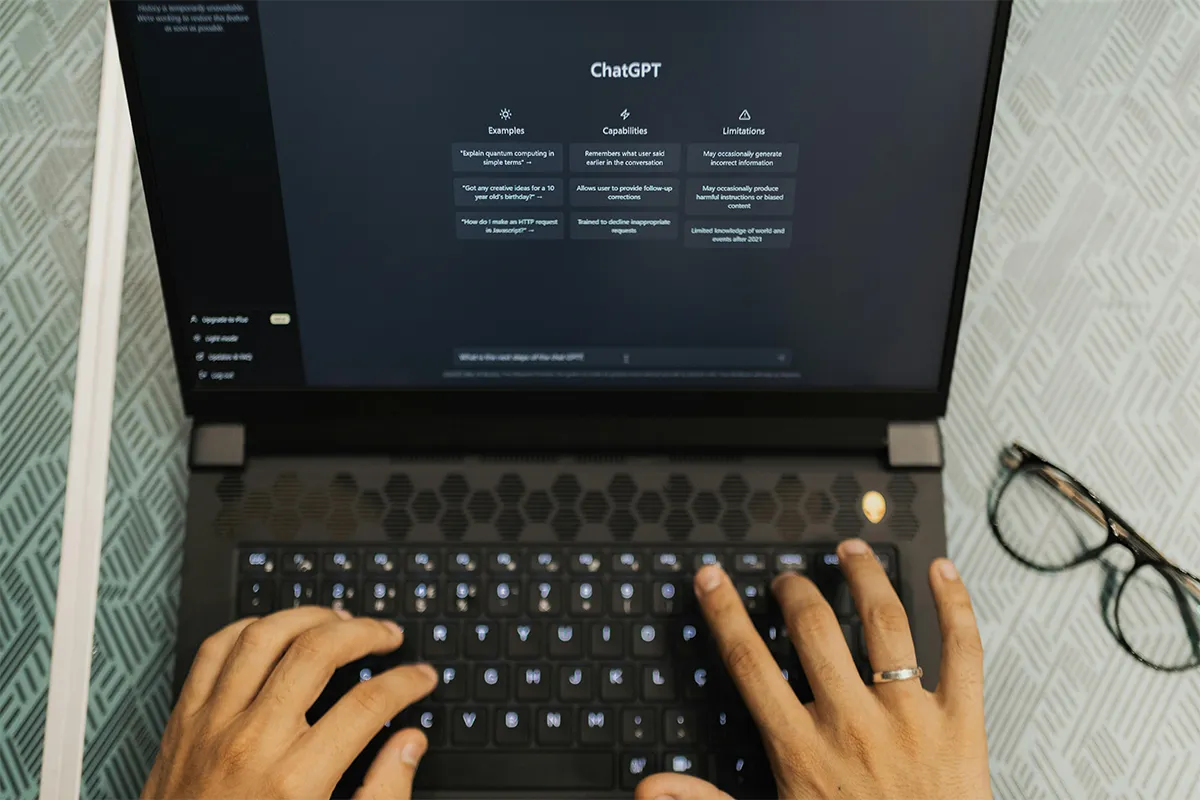If you use ChatGPT wrongly for homework or tests, you can get into big trouble. You might get very bad grades, like failing a test or a full class.
Some schools can even kick you out for a while or forever. It is very important to understand the rules about using AI to not get into trouble.
You have to follow your school’s rules when you use ChatGPT. This makes sure you do not cheat.
Can Canvas Detect ChatGPT?
Canvas can not find ChatGPT use by itself. But this does not mean you can use AI to write and not get caught.
Teachers can tell if you used AI to write things. They use Turnitin with Canvas to see if you copied, even from AI.
They can also compare your new work to your old work. If the writing looks very different, they may get suspicious.
How Canvas detects plagiarism using Turnitin?
Turnitin helps Canvas find if you copied something. It has been around for many years. Schools trust it to see if writing comes from AI or if it is copied.
Their AI tools have caught students who used things like ChatGPT before. This shows why it is good to know how Turnitin works.
But students usually can’t see Turnitin’s reports themselves. So, it is hard to know if Turnitin will see if you used AI.
Because of this problem, other AI humanizers and detectors like Easy AI Checker have become popular. These top 10 best AI plagiarism checkers are free and show you how AI checking works like Turnitin.
How Turnitin flags AI-generated work?
Turnitin’s AI checker has caught whole classes for using AI texts. These cases show how strong new copying checkers are.
Teachers fail many students if they suspect lots of AI work. They do this to keep schools honest and to follow the best practices to prevent AI plagiarism detection.
Students cannot use all of Turnitin’s tools, like similarity checks. They do not know if the system will catch their AI text.
Tools like Easy AI Checker are becoming popular. They help students check their work for AI text before they turn it in.
How do teachers detect plagiarism using Intuition?
Teachers sometimes trust their feelings to spot AI work. They look at a student’s new and old work for changes in style or depth.
A teacher on Reddit once caught a student’s text just by feeling something was wrong. Even though students may not like it, it shows how they need to write well all the time.
Teachers look at past texts to find differences. This old way shows why students should always write in their own voice.
Working mechanism of Canvas and Turnitin
Canvas is a platform schools use a lot, and it uses Turnitin to check for copied work. Students usually cannot see what Turnintin does. Without their own tools, students must depend on their teachers to keep their work honest.
To add Turnitin to Canvas, universities must set up third-party support. After that, teachers need to choose ‘Online Submission’ with either ‘Text Entry’ or ‘File Uploads.’
These steps help Turnitin to check for plagiarism and AI work. This helps teachers keep high standards at school.
Code plagiarism detection
Finding copied computer code is not easy. Code has common parts that make it hard to see if someone copied it.
Sometimes, two students might think of the same answer on their own. There are only a few best ways to solve some problems.
Also, small changes in things like variable names or notes can hide copied code. This means regular plagiarism checkers may not work well. Teachers need special tools to find these small differences in code that students turn in.
Recent studies on AI-generated code detection
New research has found it hard to spot AI code. The study called “Assessing AI Detectors in Identifying AI-Generated Code: Implications for Education” shows that AI checkers can’t always tell if code was written by a person or made by AI.
This is important because students might use AI, like ChatGPT, to help with coding. The study says we need better AI checkers to spot the difference between human and AI code.
As AI keeps getting better, schools need to keep up with new tools and ways of teaching.
If students write code by themselves but use similar ideas, it might not be seen as copying. Students can avoid being called out for plagiarism if their code has the same logical steps.
Using different comments, styles, and names can help hide copied code. Teachers should know these tricks. They need to check work in many ways, including reading it themselves, to keep schools honest.
Conclusion
Our look at Canvas shows that keeping schools honest is complex. Canvas doesn’t see if someone uses ChatGPT, but Turnitin and careful teachers make it hard to plagiarise the content. Turnitin and teacher know-how are good at finding copied work.
The main aim of the school is to help students really understand. Depending too much on AI for work stops critical thinking and learning. Colleges are changing. They come up with new ways to find cheating and change rules. Students should use these tools in the right way. They should help you learn more, not do the work for you.
Think of AI as a study aid, but it is not an easy way out. Make the most of what your college offers. Go to classes, join in talks, and ask for advice. This helps you get it, think better, and get ready for life after school. To have a good school experience, do things the right way and focus on learning properly.

